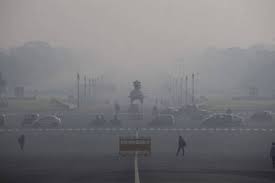
Delhi’s air quality has taken a further nosedive, falling into the ‘poor’ category, with the national capital experiencing a minimum temperature of 20.9 degrees Celsius. As of 9 am on Saturday, the Air Quality Index (AQI) stood at 231. The AQI scale categorizes air quality as ‘good’ (0-50), ‘satisfactory’ (51-100), ‘moderate’ (101-200), ‘poor’ (201-300), ‘very poor’ (301-400), and ‘severe’ (401-500). On Friday, in response to deteriorating air quality, the Centre’s air quality panel initiated the ‘Graded Response Action Plan’ (GRAP), directing local authorities in the National Capital Region to prohibit coal usage in hotels and restaurants while cracking down on polluting industries.
The ‘Graded Response Action Plan’ (GRAP) encompasses four stages: Stage I – ‘Poor’ (AQI 201-300), Stage II – ‘Very Poor’ (AQI 301-400), Stage III – ‘Severe’ (AQI 401-450), and Stage IV – ‘Severe Plus’ (AQI > 450). The Commission for Air Quality Management (CAQM) invoked Stage 1 of GRAP, emphasizing the need to prevent further deterioration of air quality throughout the entire NCR.
The India Meteorological Department predicts that the capital’s maximum temperature will reach around 37 degrees Celsius, further intensifying the challenging weather conditions.
The recent decline in air quality can be attributed to an increase in farm fires in Punjab. Many parts of Punjab have witnessed a decline in air quality to moderate levels. The AQI levels are monitored at six locations by the Central Pollution Control Board (CPCB), with Bathinda recording the worst AQI at 191. On October 6 alone, the Punjab Remote Sensing Centre (PRSC) detected 91 fresh cases of farm fires, bringing the total number of stubble-burning incidents to 845 in this harvesting season. Amritsar district has reported 345 active fires in the last six days, with Amritsar recording 41 fires on October 6, followed by Tarn Taran (15), Patiala (10), and Sangrur (6).
Sources By Agencies




